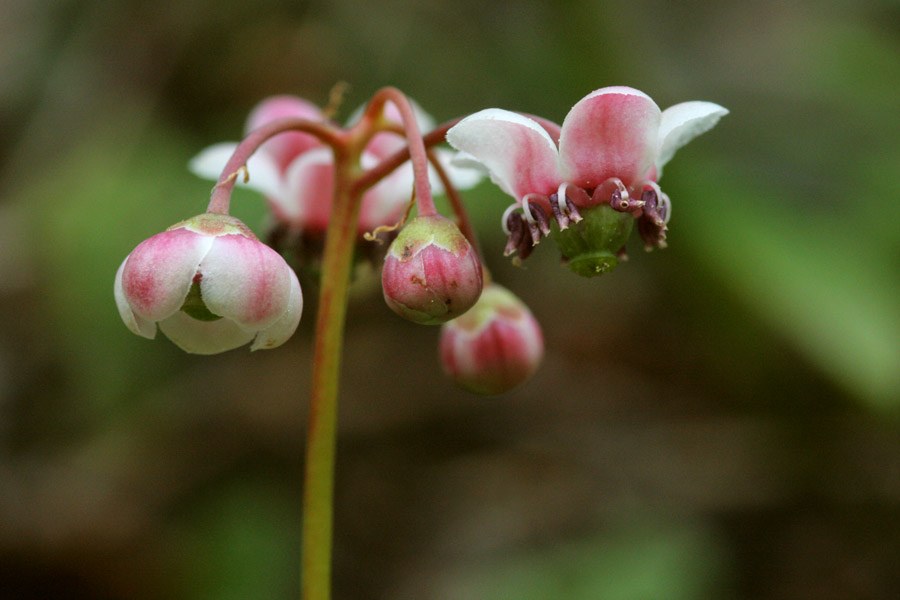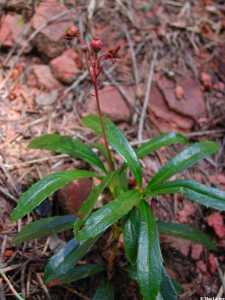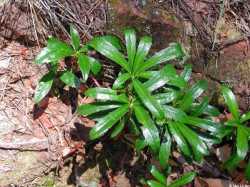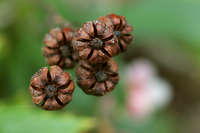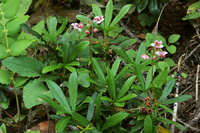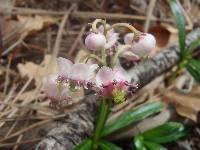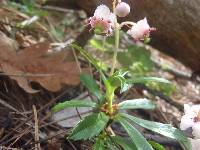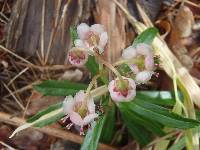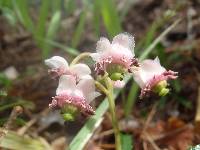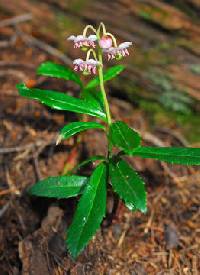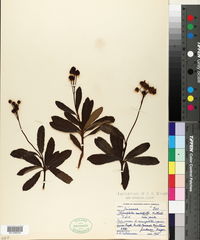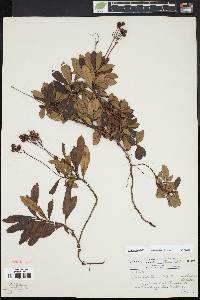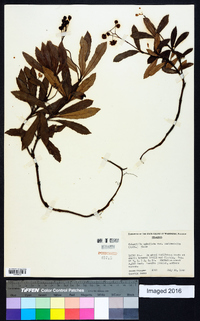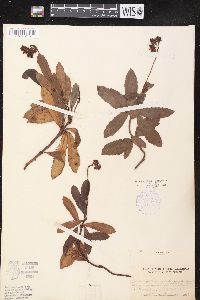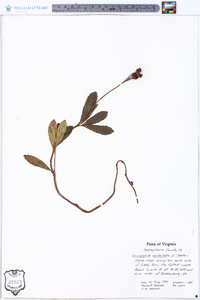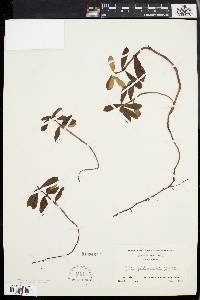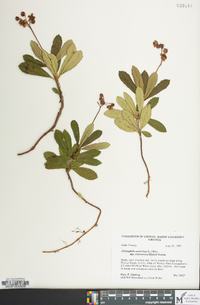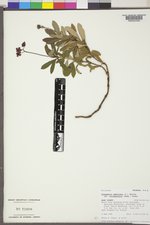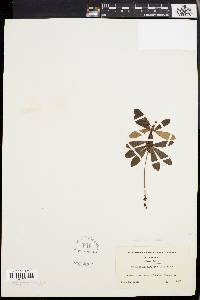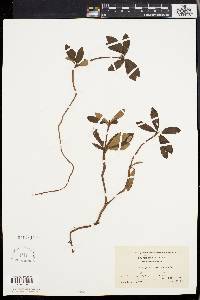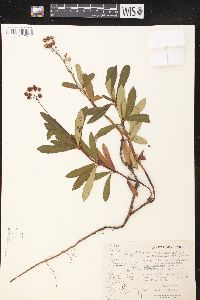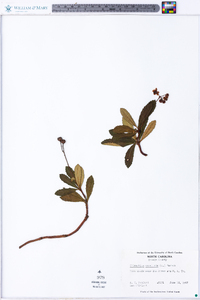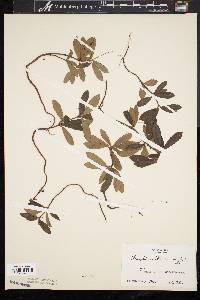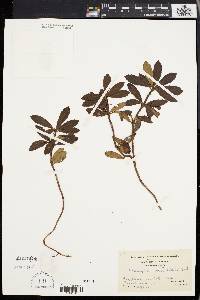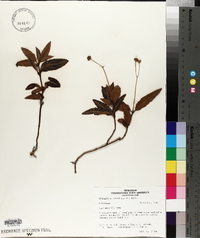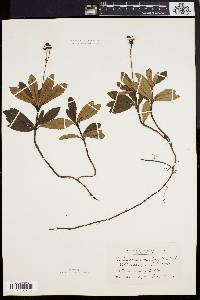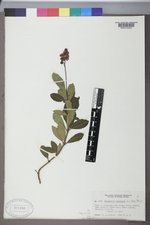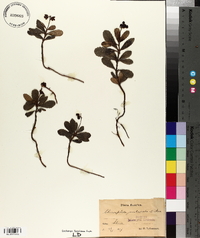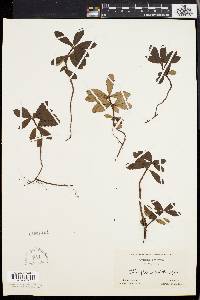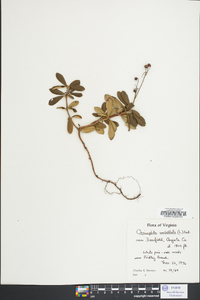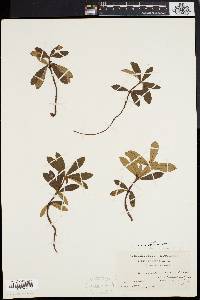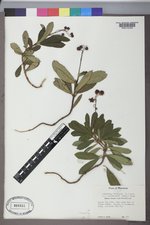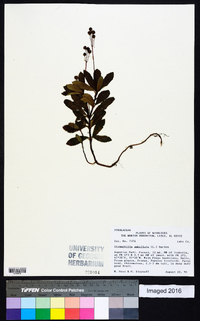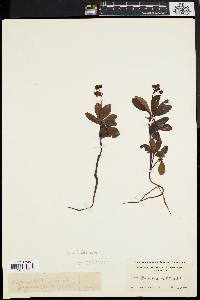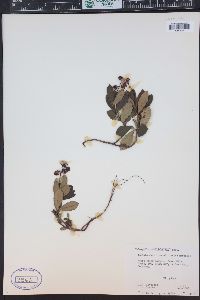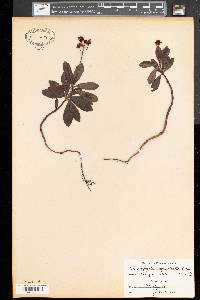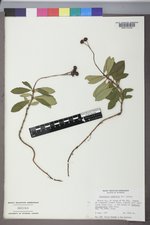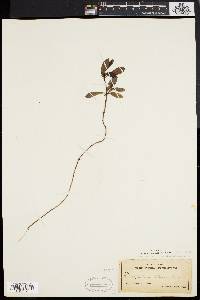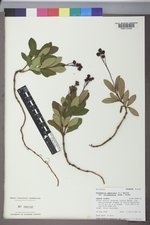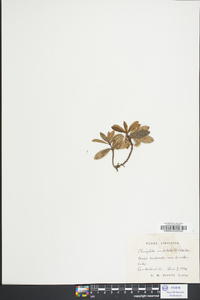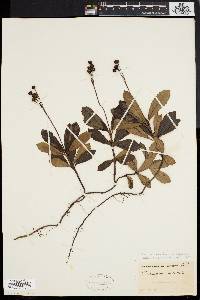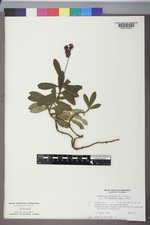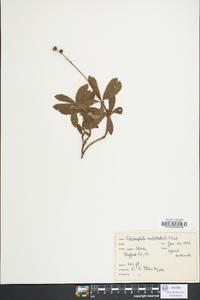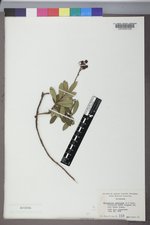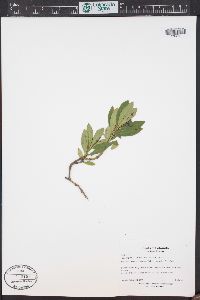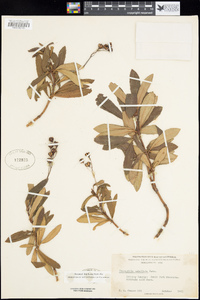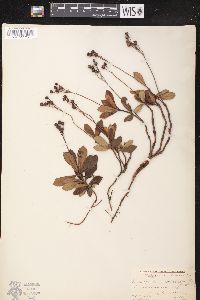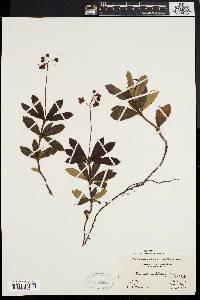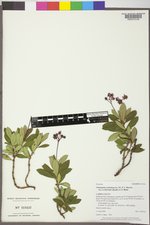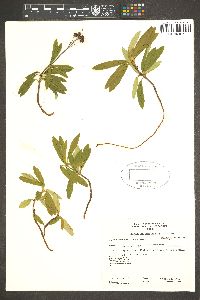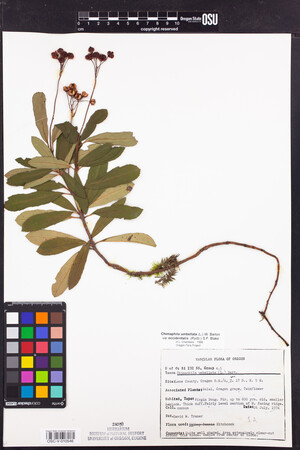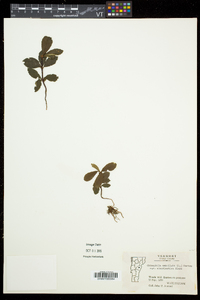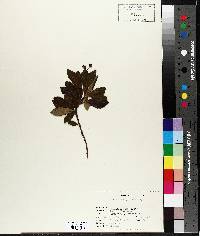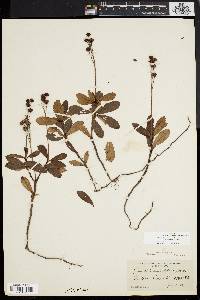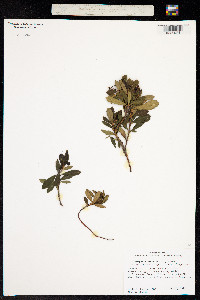
|
|
|
|
Family: Ericaceae
Pipsissewa, more...common pipsissewa
|
Chimaphila umbellata is morphologically variable across its extensive range. Six subspecies have been recognized widely in the literature: subsp. acuta in the southwestern United States, subsp. cisatlantica in eastern North America, subsp. domingensis (S. F. Blake) Dorr in Hispaniola, subsp. mexicana (de Candolle) Hultén in Mexico, and subsp. umbellata in Eurasia. S. F. Blake (1917), in discussing the complex, stated, '...while the differential characters brought forward for their specific separation are confined to differences in size, in the prominence of the venation, the shape of the sepals, the direction of the pedicels, and the rotundity of the stem, characters which are not only rather obscure but at best are merely comparative, and are shown by the material examined to be by no means absolutely constant.' Hiroshi Takahashi (1987), who did not consider subsp. domingensis, found broad overlap in most morphologic characters used to distinguish the subspecies. Extreme forms of the spectrum of morphologic expression may be distinctive; variation among the taxa appears to be clinal. Only subsp. domingensis, which is geographically isolated on Hispaniola and has glabrous peduncles and pedicels, glabrous filaments, and relatively small leaves, appears to be sufficiently distinct from the rest of the species to warrant recognition (L. J. Dorr 1995). It also has rugulate pollen; other taxa included here within subsp. umbellata have psilate pollen (Takahashi 1986b).
Plant: perennial, rhizomatous, evergreen sub-shrubs Leaves: generally many per node; blades oblanceolate, 3-7 cm long, toothed; upper surface dark green, veins not white-bordered; lower surface pale green INFLORESCENCE: inflorescence bracts linear-lanceolate, fragile Flowers: 3-10; actinomorphic, sepals broadly ovate, about 2 mm long; apex mainly rounded; margins fringed; petals pink to red, 6-8 mm long; filament enlargement lightly hairy on margins only; anthers 2.5-3.0 mm long Fruit: FRUITS erect capsules, without fibers connecting opened valves Misc: Coniferous forests; 1800-2900 m (6000-9500 ft); Jun-Aug Notes: scapes to 30 cm tall, minutely papillate, becoming densely glandular papillate in the inflorescence REFERENCES: Haber, Erich. 1992. Pyrolaceae. Ariz.-Nev. Acad. Sci. 26(1)2. General: Perennial, evergreen subshrub, 10-30 cm tall; stems spreading, the fertile branches erect, slightly woody; herbage glabrous; rhizomes long, creeping. Leaves: Cauline, crowded and appearing whorled, oblanceolate to oblong-oblanceolate, 3-7 cm long, 0.6-2.5 cm wide, dark green and shiny above, lighter green below, glabrous, veins not white-bordered, margins serrate to crenate- serrate, especially above the middle, base wedge-shaped, apex acute; petiole 2-8 mm long. Flowers: Inflorescence an umbel, mostly 5-12 flowered, glandular-puberulent, often densely so; involucral bracts 5-20 mm long; pedicels of variable length, the longest 2- 6 (9.5) cm long; calyx campanulate, 6-15 mm long, lobes 5, triangular to lanceolate; corolla showy, the tube 7-15 mm long, yellow, lobes 5, ovate, 4-10 mm long, magenta to reddish violet; flowers June-August. Fruits: Loculicidal capsule, nearly globose, 5-7 mm in diameter; seeds numerous, minute. Ecology: Coniferous forests, 1700-2900 m (5500-9500 ft); Apache, Coconino, Gila, Graham, and Greenlee counties; Canada, western and southwestern U.S., disjunct in Mexico and Guatemala. Notes: Chimaphila umbellata is sometimes confused with Paxistima myrsinites, but the latter has opposite leaves, a glabrous inflorescence, 4-parted flowers, solitary or in clusters of 2-3 arising in the axils of leaves, and smaller petals (1.5-2 mm long). Editor: Springer et al. 2008 Stems spreading, the fertile branches erect, 1-3 dm; lvs oblanceolate, 3-6 cm, acute or mucronate, sharply toothed, especially above, nearly entire below, tapering to a short petiole; fls 4-8, corymbose or subumbellate, 10-15 mm wide; dilated part of the filaments ciliolate; 2n=26. Dry woods, especially in sandy soil. June-Aug. Circumboreal, with 2 vars. in Amer. Var. cisatlantica S. F. Blake (C. corymbosa), occurring from Que. and N.S. to Minn., s. to Va., W.Va., and n. Ind., has relatively thin, veiny lvs and mostly recurved pedicels. Var. occidentalis (Rydb.) S. F. Blake (C. occidentalis), from n. Mich. to B.C., s. to Colo. and Calif., has thicker, less veiny lvs and often ascending pedicels. Gleason, Henry A. & Cronquist, Arthur J. 1991. Manual of vascular plants of northeastern United States and adjacent Canada. lxxv + 910 pp. ©The New York Botanical Garden. All rights reserved. Used by permission. |
|
|
|
This project was made possible in part by the Institute of Museum and Library Services [MG-70-19-0057-19].
Powered by Symbiota

